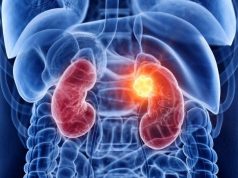Eight-week treatment noninferior to standard regimen for composite of death, ongoing treatment, active disease at week 96
By Elana Gotkine HealthDay Reporter
TUESDAY, Feb. 28, 2023 (HealthDay News) — A strategy of eight weeks of bedaquiline-linezolid is noninferior to a standard regimen for tuberculosis, according to a study published online Feb. 20 in the New England Journal of Medicine to coincide with the annual Conference on Retroviruses and Opportunistic Infections, held from Feb. 19 to 22 in Seattle.
Nicholas I. Paton, M.D., from the Yong Loo Lin School of Medicine at the National University of Singapore, and colleagues conducted an adaptive, open-label, noninferiority trial involving participants with rifampicin-susceptible pulmonary tuberculosis. A total of 674 participants were randomly assigned to undergo standard treatment (rifampicin and isoniazid for 24 weeks with pyrazinamide and ethambutol for the first eight weeks) or a strategy involving initial treatment with an eight-week regimen, extended treatment for persistent clinical disease, monitoring after treatment, and retreatment for relapse; four participants withdrew consent or were lost to follow-up. Four strategy groups were included with different initial regimens; noninferiority was assessed in two groups with complete enrollment, with initial regimens of high-dose rifampicin-linezolid and bedaquiline-linezolid.
The researchers found that a primary outcome event (composite of death, ongoing treatment, or active disease at week 96) occurred in 3.9, 11.4, and 5.8 percent, respectively, of those in the standard treatment group, the strategy group with an initial rifampin-linezolid regimen (adjusted difference, 7.4 percentage points; noninferiority not met), and the strategy group with an initial bedaquiline-linezolid regimen (adjusted difference, 0.8 percentage points; noninferiority met). The three groups reported similar incidences of grade 3 or 4 adverse events and serious adverse events.
“This treatment strategy provides a framework for the development of new, short, potent drug regimens and biomarkers for treatment monitoring to maximize cost-effectiveness and outcome benefit,” the authors write.
Abstract/Full Text (subscription or payment may be required)
Editorial (subscription or payment may be required)
Copyright © 2023 HealthDay. All rights reserved.








